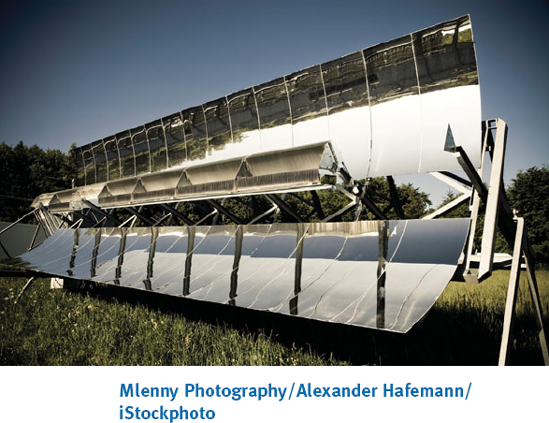Chapter 9. STEADY-STATE POWER ANALYSIS

THE LEARNING GOALS FOR THIS CHAPTER ARE:
Know how to calculate instantaneous and average power in ac circuits
Be able to calculate the maximum average power transfer for a load in an ac circuit
Know how to calculate the effective or rms value for a periodic waveform
Know how to calculate real power, reactive power, complex power, and power factor in ac circuits
Understand how to correct the power factor in ac circuits
Understand the importance of safety and the consequences of ignoring it when working with power
Solar mirror arrays Enough solar energy strikes Earth every day to power our homes and businesses for almost 30 years. However, today's solar power systems are able to capture only a miniscule fraction of that energy. The ongoing challenge in the solar power industry is to develop collection technologies that convert more of the sun's energy into usable power.
Three technologies that strive to capture solar power more efficiently are parabolic troughs, tower systems, and dish/engine systems. Trough systems use mirrors to multiply the sun's energy from 30 to 60 times its normal intensity to a receiver pipe containing synthetic oil at the focal line. Power towers focus thousands of mirrors onto a receiver at the top of the tower. Solar Two near Barstow, CA is the world's largest solar power tower. Dish/engine systems use a mirrored array to give ...
Get Engineering Circuit Analysis: International Student Version, Tenth Edition now with the O’Reilly learning platform.
O’Reilly members experience books, live events, courses curated by job role, and more from O’Reilly and nearly 200 top publishers.

